
views
Picking the Right Color
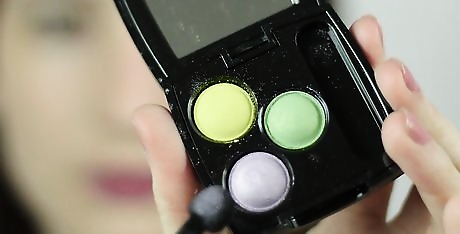
Understand how color-correcting concealers work. Color-correcting concealers help to mask skin discoloration by bringing problem areas to a more neutral hue. When picking concealers, an understanding of color theory will be helpful. Complementary colors are colors that are completely opposite each other on the color wheel. The following are the pairs of basic complementary colors you'll use for color correcting: red with green, yellow with purple, and blue with orange. For most types of color correcting, makeup of one color will cancel out discoloration of its complement. The exact opposite color can also sometimes overcorrect, making skin look lifeless and unnatural. In these instances, you should use a color next to the discoloration's complement. Most color-correcting concealers come in a single shade. The exceptions are oranges and peaches. For these, select deeper shades if you have a darker skin tone and pastel shades if you have a lighter skin tone. A normal skin tone concealer is usually used over color-correcting concealers.

Spot treat extremely red areas with green. Green is the color opposite red on the color wheel and is therefore the strongest color for canceling out red. Because of this, green color-correcting concealers are best for neutralizing intensely red blemishes. Most green color correctors are a pastel mint color. Use green concealers directly on small patches of red like pimples. Green concealers are also good for medium-sized areas of redness, such as moderate acne and irritation. For people with fair skin, a common pattern for placing green concealer is down the front of the nose, the center of the forehead, around the nostrils, and along the cheekbones. For more diffuse areas of vivid redness that cover most of your face, like sunburn or rosacea, consider using a green-tinted makeup primer instead. A tinted primer will work the same way as a color-correcting concealer but will even out your tone for a flawless foundation application.

Add a layer of yellow to even out a ruddy complexion. Sometimes green concealers work too well, making the skin look dull and lifeless. By instead selecting yellow, a warm color next to green on the color wheel, you can tone down red discoloration without removing all traces completely. Yellow concealers are a good choice for masking mild to moderate diffuse redness. Yellow concealers are also great for neutralizing and brightening dark purple and blue blemishes like fresh bruises, age spots, sun spots, and dark under eye circles on some people. If this is your first time using a particular skin tone concealer or foundation, check to see how you look wearing them without additional color correction first. Many concealers and foundations for lighter skin tones have some degree of yellow pigment for built-in color correction.

Use bright orange on darker skin tones. If you have darker skin, orange can be used as a catch-all color corrector for many different types of discoloration, from acne scars to hyperpigmentation around the lips. You can also apply orange to the entire face for a radiant effect. When using orange as a whole-face product, consider using a dusting of orange powder or tinted primer instead of concealer. Orange is also the color of choice for correcting blue-toned under eye circles on medium to dark skin. If you have darker skin that has a lot of natural variation in shade, it's best to also use two or more different oranges for color correcting. Use a deeper orange on darker areas of skin and a paler orange on the lighter spots. If you have lighter skin, you may choose to use orange concealer as a bronzer for contouring instead of color correcting. Orange is generally too bold to work as a color corrector on light skin, but you can brighten the area under your eyes with a light salmon color-correcting concealer.
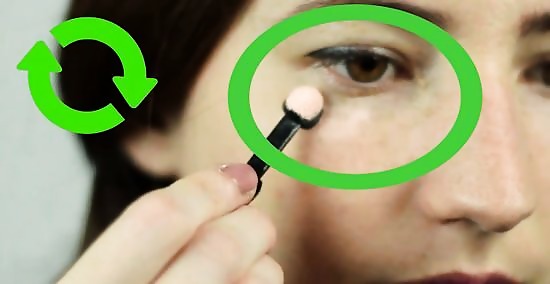
Cover up dark under eye circles with salmon or peach. Concealers in this color family are a muted combination of orange, red, and yellow. Because of this, a single concealer can cancel out the blue, green, and purple often found in the dark under eye circles of people with fair to medium skin. In general, salmon works best on pale skin, while peach works best on olive and tan skin. For darker under-eye circles, you may need to go a little deeper into the orange family when you're choosing your concealer. Peach can also work very well on pale skin when correcting brown patches like age spots. These shades are also good as an all-over balancing brightener for olive skin. When used in this way, either brush some onto your highlight areas or use a pink-tinted primer on your whole face.
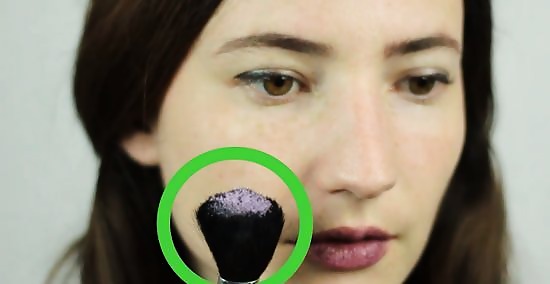
Dust your face with lavender to balance yellow tones or sallow skin. Purple is the complement of yellow, so purple concealers neutralize warm yellow tones. The vast majority of purple concealers are a pastel lavender color. You can use lavender to cover up old bruises and age spots. Like orange and yellow, lavender can also be used across the entire face. When using color corrector in this way, consider a tinted primer as an alternative. If your natural, healthy skin tone is on the yellow side, don't feel the need to "correct" it. Skin that is merely warm-toned looks radiant on its own.

Apply blue to cover up orange hyperpigmentation. While orange discoloration is uncommon, the best way to neutralize it is with its complement, which is blue. A majority of blue concealers are a pastel robin's egg color and tend to work best on fair to medium skin. These concealers are best for balancing out warm tones that are dark and intense, such as sunspots. These concealers are also a good choice if you've gone a little overboard with the self-tanner. By bringing these patches to a more neutral tone, they will look less obvious and more natural. If the discoloration is across your entire face, try using a blue-tinted primer instead of a concealer.
Applying the Concealer

Prime your face. Start with clean skin and add a little moisturizer of your choice if needed. Next, apply a makeup primer evenly across your entire face. Primer will even out any imperfections on your skin to give you a smooth canvas to work with. Primer also helps makeup to adhere better to skin, making it last longer. When using an all-over color corrector, such as green for ruddy skin or lavender for sallow skin, consider using a tinted makeup primer. If this is the only color correction you would like to do, skip the color-correcting concealer.

Load a clean concealer brush with the color corrector. If you don't have a concealer brush, any other fine makeup brush will also work. Dip or swipe your brush over the concealer to load. Like other types of concealers, color correcting-concealers come as creams, liquids, and powders. If you're using a powder concealer, tap your brush over the container to remove excess product. Some liquid concealers come in tubes with their own applicators. You can use those directly on your skin instead of loading a brush. If you're using a crayon or stick concealer, you can either swipe your brush against the concealer or apply it directly to your face.

Dab the concealer directly onto the blemish. Be careful not to overdo it. For localized areas of discoloration, be especially careful not to apply the concealer too far outside the blemish's perimeter. While green will neutralize redness, it can make already neutral-toned skin look sickly. Brush on only a minimal amount of concealer. Too much product in general will also lead to caking and creasing. Apply the concealer sparingly, then build up layers if you need more coverage.

Blend your color corrector. Even out the concealer by blending it out. Use small, circular buffing motions to spread the product. If you used a brush for application, use the same one for this step. You can also use clean finger tips to blend instead. If you're correcting a small blemish, be sure to keep the concealer focused on this spot and don't blend it out too far. If you're using a color corrector on your entire face, blend it out completely as you would with foundation.

Apply a sheer flesh-toned concealer over top. Remember that color-correcting concealers are meant to neutralize just the tone of a blemish. You will need to brush on a normal concealer to actually hide the mark. Use a concealer with a sheer formula to prevent the area from looking too thick or caked on. Be sure to blend the second concealer before moving on.
Put on foundation. Color-correcting concealer should always be applied before you put on foundation. For best results, use a foundation brush to apply a light layer of foundation. Start in the center of your face and work your way outward. Then, use a damp beauty blender to blend the foundation so it looks natural.
Add another layer of concealer if necessary. If your blemishes still stand out, you can apply another layer of sheer, flesh-toned concealer. Lightly dab the concealer over the desired area and blend it in.
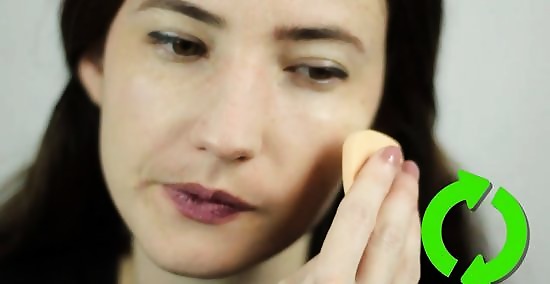
Finish with setting powder. To ensure your makeup stays in place all day, you need to set it. Choose a loose, translucent setting powder in order to avoid adding more coverage, which could cause your makeup to look cakey. Use a large, flat makeup brush to press setting powder into your skin after you apply your foundation and concealer.
Addressing Common Concerns

Choose concealers with your skin type in mind. Like regular concealers, color-correcting concealers come in a variety of different consistencies. While which you use will likely come down to personal preference, some types will work better on skin that is dry, oily, or a combination of the two. Cream concealers are the best choice for dry skin as they add moisture and prevent your skin from looking flaky. They also provide the most coverage. Liquid concealers are best for oily skin. They feel lighter on the skin but may not cover darker blemishes adequately. Despite this, liquid concealers work very well around the eyes. Primers are always liquid. People with combination skin may choose to use different types of concealer on different parts of the face. For example, liquid at the oily T-zone with cream for dry cheeks.

Combine color corrector types and colors when addressing multiple concerns. If you have multiple skin issues you would like to address, there is no reason to just stick to one color corrector. Most people who use color correctors go with at least two at a time. For example, if your skin is sallow but you also have purple under eye circles and a few pimples, you would use at least 3 different color correctors. A potential makeup scheme would be to start off with a lavender primer before applying your foundation. After that, brush peach concealer under your eyes and spot treat your pimples with a green concealer.

Remember to always blend your makeup well. A common cause of a subpar, unnatural look when using makeup is improper blending. Foundation, concealer, bronzer, blush, and eyeshadow all need to be blended. In fact, many makeup artists consider blending to be the most important step when applying makeup. One major reason to use color-correcting concealers is to avoid having to go overboard with opaque foundation and concealers. If you find that your makeup still looks caked on, use less product. Rely on thin, well-blended layers instead of thick ones.













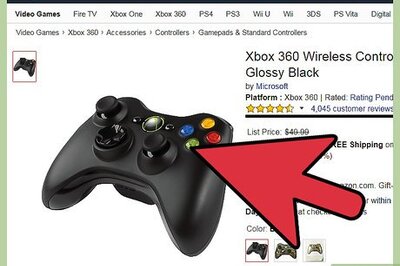






Comments
0 comment